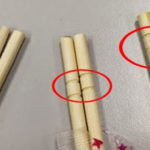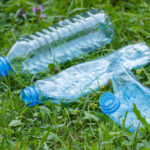With the unpredictable progression of the pandemic, coupled with the closure of restaurants and the necessity for people to stay indoors unless absolutely essential, there has been a significant rise in the trend of ordering takeout.
This is understandable, but if you don’t pay attention to how your food is packaged and stored, it can pose serious health risks to you and your family. Let’s explore this issue and find a solution together in this article.
1. The Dangers of Takeout Containers
Most takeout food is packaged in plastic bags, styrofoam boxes, and other convenient and inexpensive materials. However, these materials can be harmful to consumers’ health.
According to PGS. TS Nguyen Duy Thinh, former lecturer at the Institute of Biotechnology and Food Technology, Hanoi University of Technology: “Most plastic products, especially styrofoam boxes, contain Styrene – a chemical that has been identified by the International Agency for Research on Cancer as potentially damaging to the brain, liver, endocrine system, and can cause infertility and cancer.”

It is important to note that these containers should not be used for hot food. However, in reality, they are often used to hold very hot food. This causes the plastic chemicals to dissolve and contaminate the food. When consumed, it can harm the liver and increase the risk of early puberty in children, among other potential health issues.
2. Guidelines for Safe Takeout
Avoid keeping hot food in plastic bags or styrofoam boxes for too long
If you must order hot food like soup, noodles, or fried dishes, it is best to transfer the food to a bowl as soon as you receive it and consume it as soon as possible.
Leaving hot food in these containers for extended periods will allow more toxins to leach into the food, increasing the health risks.
Alternatively, if you’re not going to eat it right away, transfer it to a separate pot so that it’s easier to reheat, or use any other high-quality, heat-resistant container.

Opt for cold takeout options
It is recommended to choose cold food options when eating out. This reduces the impact of high temperatures on the packaging and minimizes the risk of toxins leaching into the food. However, you should still avoid keeping food in low-quality packaging for extended periods, be it hours or days.

Do not reuse containers that previously held hot food
Containers that have held takeout food should only be used once and then discarded. Reusing them can be harmful to your health. Make sure to dispose of them properly.

Use high-quality food storage containers from home
PGS. TS Nguyen Duy Thinh advises: “It is best to avoid the habit of using disposable plastic and styrofoam containers. Instead, if possible, bring your own high-quality containers from home when buying takeout. This ensures safety and also helps reduce waste.”

We hope that this article has provided valuable information to help you safely enjoy your takeout meals and protect the health of your loved ones. Stay safe and healthy!
Exploring the Pros and Cons of Sleeping in an Air-Conditioned Room
Is sleeping with an air conditioner a good idea? As concerns over the adverse effects of air conditioning on our health increase, it’s important to understand the risks and rewards of using air conditioning while sleeping. Let’s examine the benefits and drawbacks of sleeping with an air conditioner, and the protective measures one should take.






































